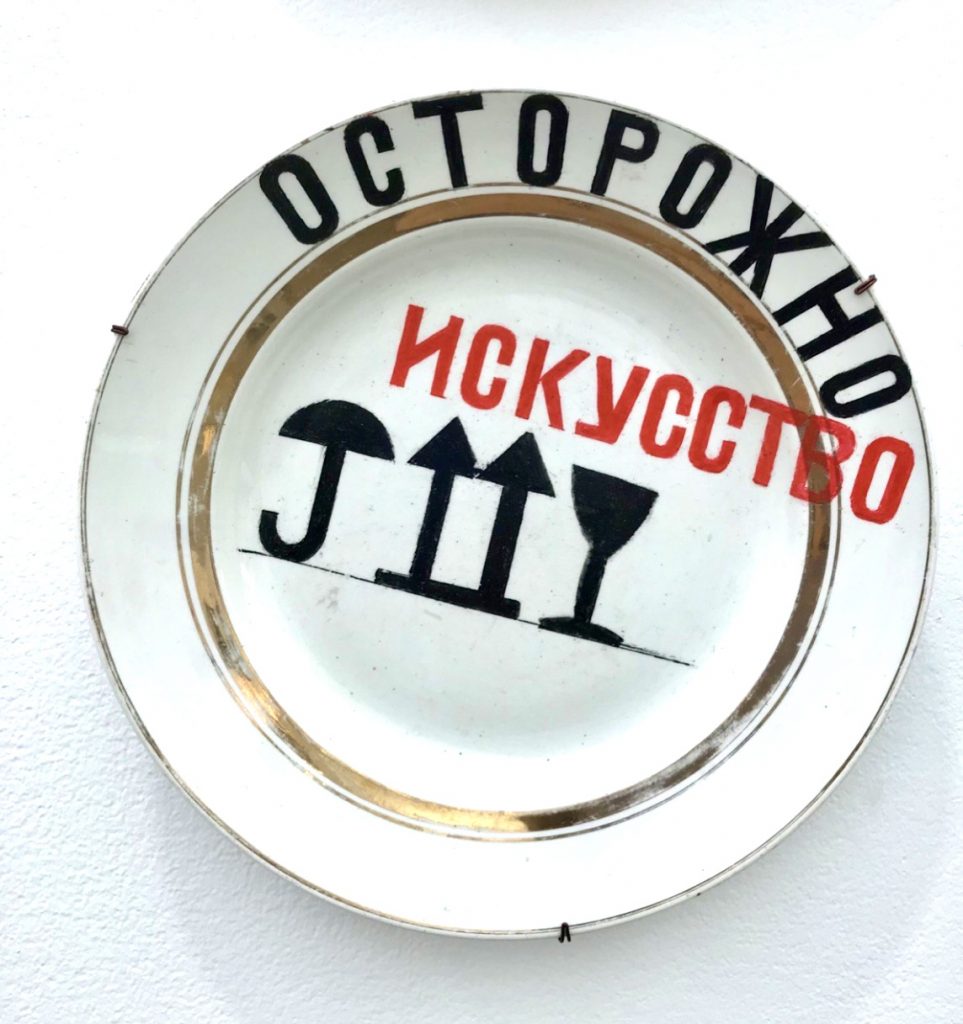
Art historian and art critic Victoria Anisimova contributed this article to Art&signatures:
«The ART MOSCOW fair first took place in 1996 in the Central House of Artists on Krymsky Val, and for a long time it was almost the only and the foremost platform which demonstrated modern contemporary art. Then, a new exhibition project immediately formulated its own position. The organisers distanced themselves from salon art, solely exhibited the current trends of the art world in the last quarter of the XX – the start of the XXI century and the classics of modernism and focused on the most important fairs in this field (Art Basel, Frieze, Fiac). Therefore, from the very beginning, ART MOSCOW followed the strict selection rules for the displayed items, which was and still is the responsibility of the Council of Experts. However, with the passage of time, the concept and format of the fair changed. In the 2010s, a special emphasis was placed on young experimental galleries, with the emergence and development of new names in art. The format in which the 20th anniversary of ART MOSCOW in Gostiny Dvor was held, first materialised three years ago. It follows the latest trends of similar European events – to combine old classical and current art, design and archaeology, decorative and applied and digital art on one platform. Such a synthesis, on the one hand, makes it possible to present all spheres of collectors in the field of art, on the other hand, clearly or covertly demonstrates the continuity of the old and the new, a constant «interdisciplinary» dialogue, not so much as differences, more so as connections between different trends, styles, artists, masters, ideas, ideologies, concepts and artistic methods.
So, more than 150 galleries and private collections have shown works in four sections — «Antiques. Classical Art», «Modern Art», «The Street of Jewelry» and «Design». To better orient the guests of the exhibition, the clusters were separated from each other by aisles; they differed through the colour of the walls and the architecture of the stands.
The first two clusters were more widely represented. In the «Classical Art» section, the permanent participants of the Antique Salon were exhibited – large and not very antique galleries in Moscow, St. Petersburg (Metropolitan, Suslov Fine Arts, The Collector Club, Antique Salon On Kutuzovsky Prospekt, 22), as well as private collectors, such as the Collection of the Serbian collector Vladimir Pesic. Lovers of antiquity could see and purchase works of the «first» names of Russian art of the XVIII-XIX centuries – Aivazovsky, Shishkin, Konstantin Makovsky, Fyodor Rokotov, Surikov, Polenov, etc., portraits of members of the imperial family that are always in demand; sculptures, decorative items made of bronze, silver, porcelain, works of legendary jewelry masters – Faberge, and works by artists of the Russian avant-garde and Russian emigres — Marc Chagall, Mikhail Larionov, Natalia Goncharova, Boris Grigoriev. Rarely did the stands of antique galleries adhere to a single exposition concept. Even the largest ones preferred to show «as much as possible» and to be «more diverse». Russian artists, Russian classics, paintings of the Socialist Realism period, furniture from the Russian Empire, and European Art Deco furniture, posters and works of nonconformists, which have been gaining momentum in sales over the past few years could all therefore be found together at one stand. The works of Nemukhin, Rabin, Zverev and other sixties artists in general were presented quite a lot at various stands, including in the section of «Contemporary Art». These names seemed to «hang» between the old and the new, becoming «classics of modern art». For example, the Kirill Danelia Gallery in the Contemporary Art section showed paintings by Oscar Rabin in 2005, and the Kore Gallery in the Antiques sector presented three unusual early works by Dmitry Krasnopevtsev from the 1950s. One of the best stands presented in this section was the VLADEY MODERN stand with a collection of icons (XVI-XVII centuries) of the recently departed Alexander Lipnitsky.
More than thirty Russian galleries were represented in the «Contemporary Art» section – «Lumiere», «Grossart», «Erythage», VLADEY, «Luch», SISTEMA GALLERY, international galleries PLATO and IWS Sareh Art Gallery, and many others. Among the authors that were represented there, were living and departed «classics» of contemporary art – Oleg Tselkov, Oscar Rabin, Vladimir Dubosarsky, Boris Markovnikov, Valery Koshlyakov, Peter Belenok, Pavel Pepperstein, and young but already famous artists – Leonid Tshe, Nestor Engelke, Dmitry Shabalin, Alisa Gorshenina. Another 15 sites were given to the Agency of Creative Industries of Moscow for personal stands of aspiring artists, winners of the intensive «Art.Workshop» masters’ schools.
The «Design» section looked more modest against the backdrop of other sectors. It combined vintage objects and works of modern designers, including furniture, ceramics, lighting fixtures, and decorative objects made of metal.
Returning to the idea of synthesizing different areas of collecting, which was stated in the programme of the fair, it can be noted that only a few of the participants allowed themselves to combine the «old» and «new» on one site, to create an integral space where objects from different times and spaces can exist organically. The idea of combining modern painting and actual textile art (carpets) through the collaboration of the two galleries «Vellum» and «Atelier Choutko» turned out to be successful.
The stand of the gallery «Herythage», with furniture from European authors of the XX century and decorative objects, graphics, and paintings by European and Russian artists looked as the most harmonious and concise.»


